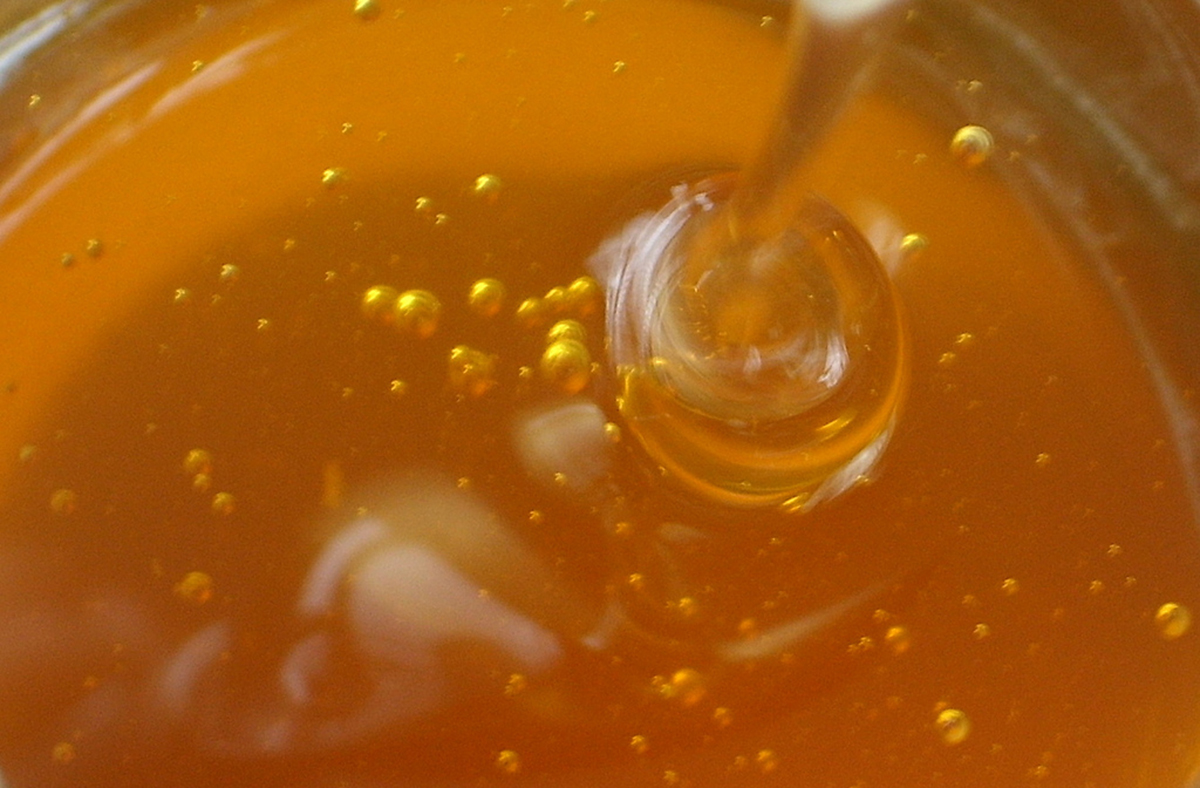Table of Contents
Bacterial infections of the skin are notoriously hard to treat. They can lead to fatal complications. As more and more strains of bacteria become more and more resistant to more and more antibiotics, doctors turn to honey as an alternative that works.
Medical researchers have a good idea of how medicinal honey helps to heal the skin. One of the healing characteristics of honey, it turns out, is that it is sugary.
Most of us have heard some version of the facts regarding how sugar is terrible for us. In large amounts in the diet, this is true. When applied to the skin in the form of honey, however, sugar draws fluid out of the lymph system. White blood cells "hitch a ride" to the site of the infection. As long as the wound is not so weepy that the honey begins to be diluted, Sugar also draws water out of bacterial cells. They become dehydrated, and do not multiply as rapidly. This gives the immune system more time to fight the infection.

Why couldn't you just apply table sugar to a wound? Actually, you could, not necessarily with bad results. However, sugar has the added advantage of being a complex mixture of carbohydrates and proteins with higher osmolarity, that is, that is harder to dilute.
Wound care studies have found that sugar applied to a wound becomes so diluted it is no longer effective after just four hours, while honey only has to be applied every four days.
How potent is medicinal honey? Manufacturers of medicinal honeys favor products like manuka, which bees make from a single kind of flower, because they produce reliable effects. Most medicinal honeys are standardized to produce an antibacterial effect equivalent to a 12 to 16 percent solution of phenol. Unlike phenol, honey does not have the potential to kill healthy tissue.
Various studies have found that medicinal honey kills Staphylococcus aureus, various strains of Streptococcus, various strains of Enterococcus, E. coli, Klebsiella, and Pseudomonas aeruginosa, along with a large number of species of bacteria that do not require oxygen. It does not make any difference whether or not an organism is antibiotic-resistant.
There are no bacteria that are "honey-resistant." Sometimes when an antibiotic will not work, honey will. Honey will also kill many established wound infections. Bacteria form a tough layer known as a biofilm, essentially "rooting" themselves in the wound. Honey can break up biofilms and speed the healing of a chronic infection.
This same property makes honey useful in the debridement of fresh wounds. Debridement is a process of stripping away damaged tissue with a scalpel to expose bacteria to oxygen. It can be quite painful. Honey, however, stimulates the sloughing off of dead tissue without the need for a knife. It also fights inflammation and stimulates the growth of new blood vessels that carry white blood cells, oxygen, and nutrients to heal the skin.
Does only manuka honey work? The makers of products using manuka honey would like you to think so, but there is actually value in other kinds of honey. The distinct characteristic of manuka honey is that its methyglyoxal breaks down in a way that keeps releasing hydrogen peroxide longer than methylglyoxal from other kinds of honey, Manuka is in fact a superior medicinal honey for some applications, but kanuka honey (collected in New Zealand from bees that depend on kanuka trees) is better for treating inflammation, and Brazilian honey is more potent against certain kinds of infections. However, other kinds of honey are also useful in wound care. Just be sure the honey itself is not contaminated. Use honey specifically prepared for application to the skin, certified to be bacteria-free, and use it externally, not internally. You can eat honey that is much less expensive than the medicinal brands. Save medicinal honey for your skin.
- Majno G. The Healing Hand. Man and Wound in the Ancient World. Cambridge, Massachusetts: Harvard University Press
- 1975. - See more at: www.woundsresearch.com/article/honey-biologic-wound-dressing#sthash.nWeR2Wrz.dpuf.
- Molan P, Rhodes T. Honey: A Biologic Wound Dressing. Wounds 2015
- 27(6):141-151.
- Photo courtesy of BotheredByBees via Flickr: www.flickr.com/photos/botheredbybees/245215850
- Photo courtesy of Siona Karen via Flickr: www.flickr.com/photos/sionakaren/3870732249


Your thoughts on this